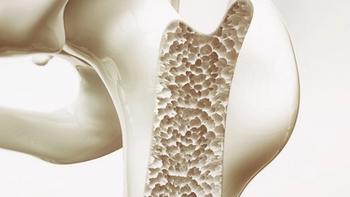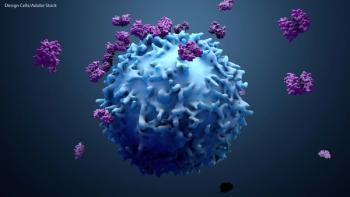
- ONCOLOGY Vol 17 No 1
- Volume 17
- Issue 1
Commentary (Enke): Management of Sexual Dysfunction After Prostate Brachytherapy
The article by Drs. Merrick,Wallner, and Butler providesan excellent overview of issuespertaining to sexual dysfunctionfollowing prostate brachytherapy.The authors were the first to addressthe historical and current problemswith diagnosing sexual dysfunction.They make a strong case for developinga quality-of-life (QOL) instrumentthat is specific for prostatebrachytherapy.
The article by Drs. Merrick, Wallner, and Butler provides an excellent overview of issues pertaining to sexual dysfunction following prostate brachytherapy. The authors were the first to address the historical and current problems with diagnosing sexual dysfunction. They make a strong case for developing a quality-of-life (QOL) instrument that is specific for prostate brachytherapy.
The authors also discuss the potential problems associated with obtaining information for QOL surveys. A physician's assessment of erectile function may differ significantly from that of the patient. There is also the potential for underreporting the incidence of adverse outcomes when data are obtained from surveys mailed to patients and their sexual partners.[1] The authors' concern about potential selection bias arose from their review of the paper by Walsh et al.[2]
Although a brachytherapy-specific QOL instrument is appropriate, there is also a need for an instrument that allows a QOL comparison of sexual function associated with the three major definitive treatment modalities. The other problem with comparing potency preservation by treatment modality lies in identifying the source of the information used for the comparison. Although an individual urologic surgeon or brachytherapy institution can demonstrate admirable potency preservation rates, the more important question involves the overall results obtained from multiple centers performing similar procedures.
Length of Follow-up
The topic of sexual dysfunction following brachytherapy raises the broader question of appropriate length of follow-up for end-point analysis. The use of prostate brachytherapy expanded significantly during the second half of the 1990s. There was a similar rush to embrace a new technique when Whitmore introduced retropubic implantation of iodine-125 radionuclides in 1972.[3] Additional follow-up showed an unacceptably high local failure rate due to problems with implant geometry and underdosage of the prostate target. That procedure was essentially abandoned once adequate follow-up demonstrated a suboptimal control rate.
Ultrasound-guided prostate brachytherapy represented an improvement over the approach introduced by Whitmore. The problems with suboptimal dose distribution were largely overcome. One of the reasons that prostate brachytherapy achieved popularity was its purported high rate of potency preservation. Reports published 7 to 9 years ago indicated a 5-year potency preservation rate in excess of 90% in men under age 60. Longer follow-up has again proven initial expectations to be overly optimistic. The authors indicate that current potency preservation rates for men treated with brachytherapy alone vary between 76% at 5 years and 52% at 6 years.[4,5]
Potency Preservation Rates
The authors also provide a thorough overview of the factors that influence potency preservation rates. These factors can be separated into clinical and technical components. The clinical components include preexisting history of erectile dysfunction, history of diabetes, and age. The impact of hormonal therapy on long-term potency preservation is controversial. What seems more apparent is the adverse effect of combining external-beam irradiation with brachytherapy. Potency preservation may decrease by 20% to 25% with combined therapy compared to brachytherapy alone.[4,5]
What is not clear are the guidelines that are used to justify the use of combined-modality therapy. Patients with Gleason scores ≥ 7, prostate- specific antigen levels ≥ 10 ng/ mL, and four or more involved sextant biopsies are less likely to be treated with brachytherapy alone. Careful consideration must be given to justifying the use of combined-modality therapy in patients with more favorable risk factors.
Other technical factors that may affect potency preservation include the prostate dose, dose to the neurovascular bundles, and dose to the penile bulb. Although the authors point out that the prostate dose may not be involved, the evidence of adverse effects related to dose to the penile bulb and neurovascular bundles is more compelling. These issues were not widely discussed during the mid-1990s, when the use of brachytherapy increased dramatically.
Dose Calculation
This same concern regarding "organs at risk" will need to be considered for the dose escalation associated with intensity-modulated radiation therapy and three-dimensinal conformal radiation therapy. The authors' recommendation regarding allowable dose to the penile bulb is a useful guideline although potentially diffidifficult to implement proactively because the calculations are based on postimplant dosimetry. Nevertheless, it is useful in assessing postimplant dosimetry and guiding modifications of the implant technique for future implants.
Although the relationship between erectile dysfunction and dose to the neurovascular bundle is less clear, this is an area that can be addressed with dosimetric preplanning. The observation that excessive doses to the penile bulb and neurovascular bundle may adversely affect erectile function could result in an alteration of the technique used by prostate brachytherapists.
It appears that we are still on the steeper slope of the learning curve. The need for an adequate follow-up period is important in any end-point analysis. As investigators make observations that result in new selection criteria or techniques, it will also be necessary to reevaluate end points such as erectile dysfunction.
References:
1.
Roach M III, Chinn DM, Holland J, et al:A pilot survey of sexual function and quality oflife following 3D conformal radiotherapy forclinically localized prostate cancer. Int J RadiatOncol Biol Phys 35:869-874, 1996.
2.
Walsh PC, Marschke P, Ricker D, et al:Patient-reported urinary continence and sexualfunction after anatomic radical prostatectomy.Urology 55:58-61, 2000.
3.
Whitmore WF Jr, Hilaris B, Grabstald H:Retropubic implantation of iodine-125 in thetreatment of prostatic cancer. J Urol 108:918-920, 1972.
4.
Merrick GS, Butler WM, Galbreath RW,et al: Erectile function after permanent prostatebrachytherapy. Int J Radiat Oncol Biol Phys53:328-333, 2002.
5.
Potters L, Torre T, Fearn PA, et al: Potencyafter permanent prostate brachytherapy forlocalized prostate cancer. Int J Radiat OncolBiol Phys 50:1235-1242, 2001.
Articles in this issue
almost 23 years ago
Diagnosis of Venous Thromboembolic Disease in Cancer Patientsalmost 23 years ago
Management of Sexual Dysfunction After Prostate Brachytherapyalmost 23 years ago
Commentary (Hillner): Evaluating the Total Costs of Canceralmost 23 years ago
Evaluating the Total Costs of Canceralmost 23 years ago
Commentary (Goldman): Evaluating the Total Costs of CancerNewsletter
Stay up to date on recent advances in the multidisciplinary approach to cancer.


















































































